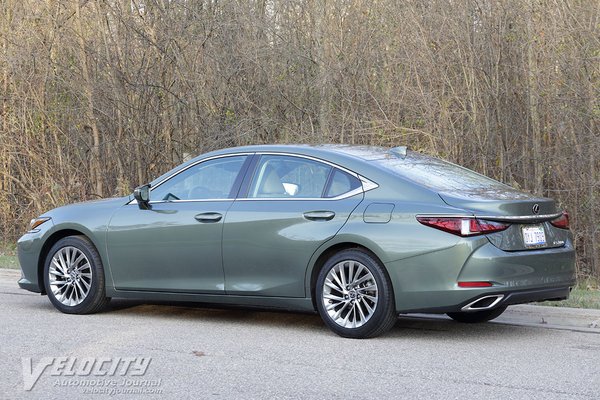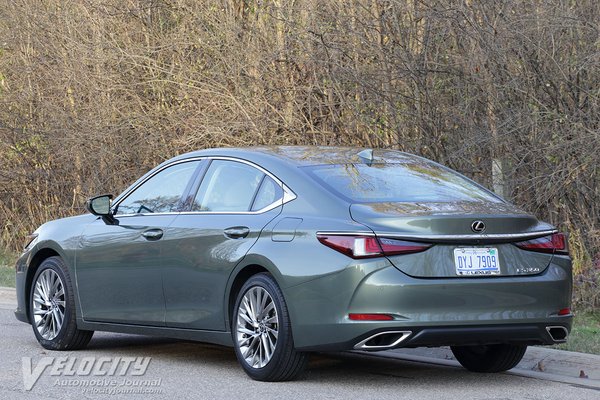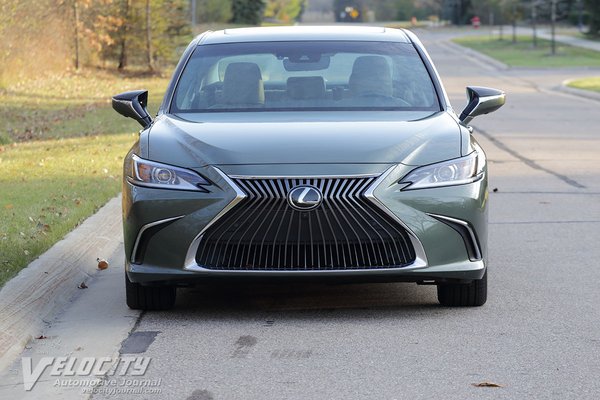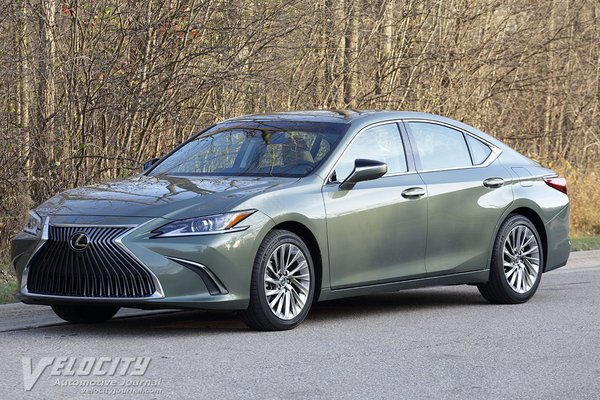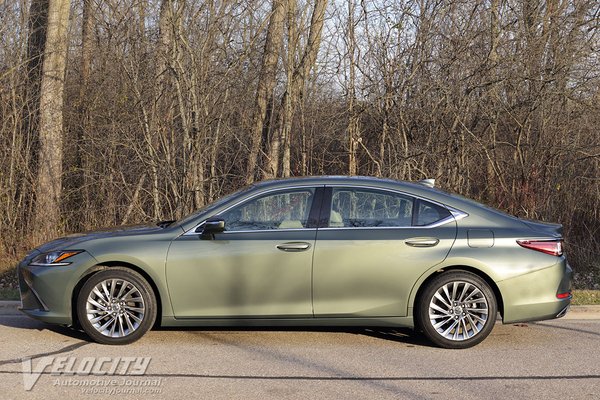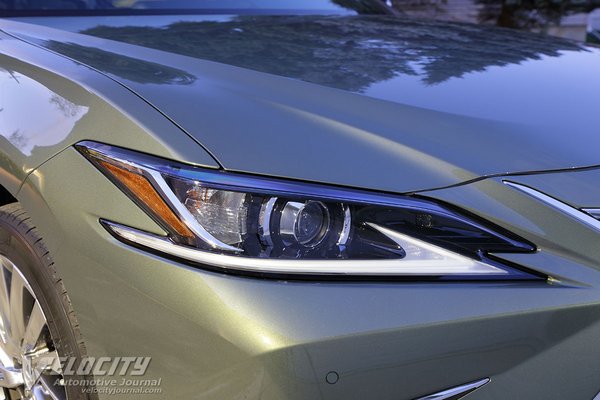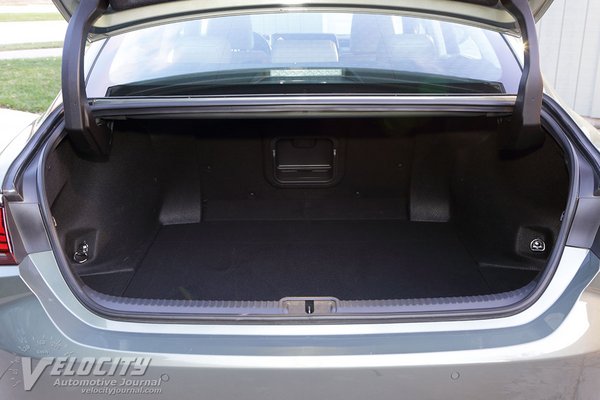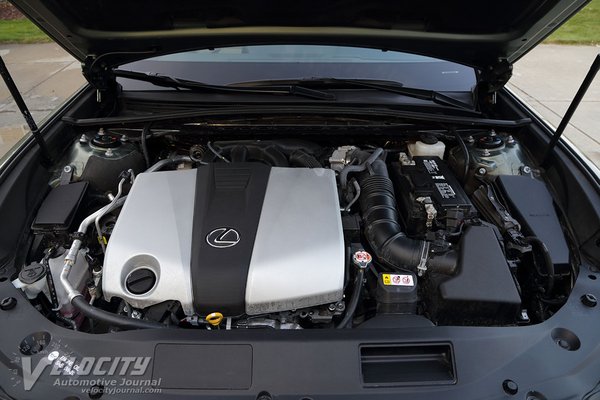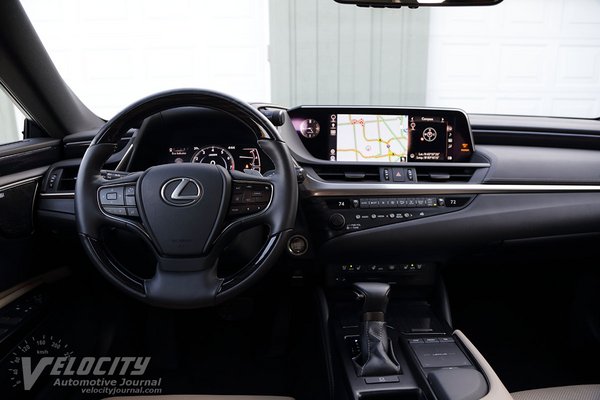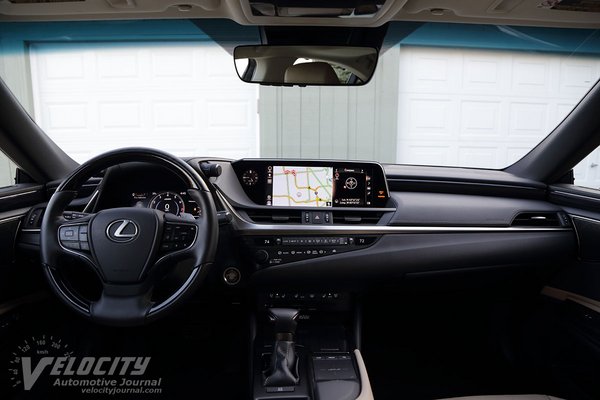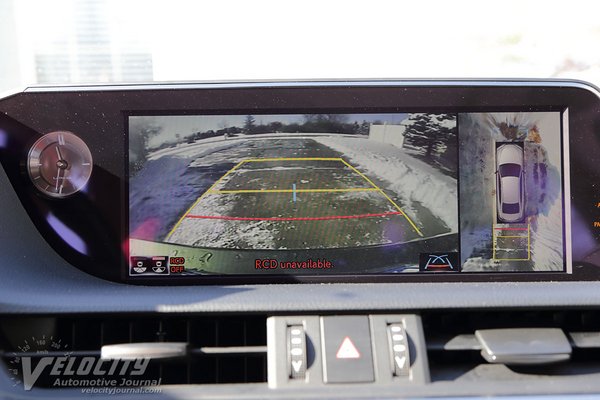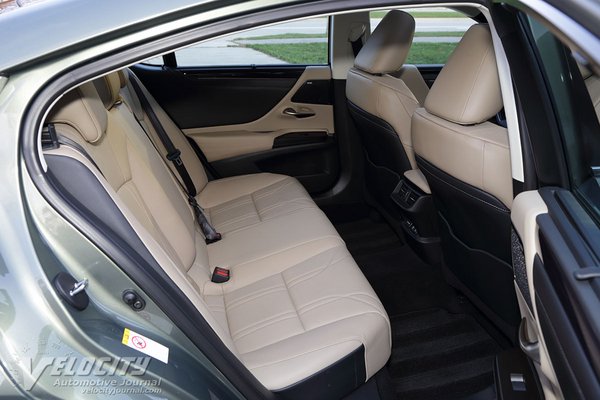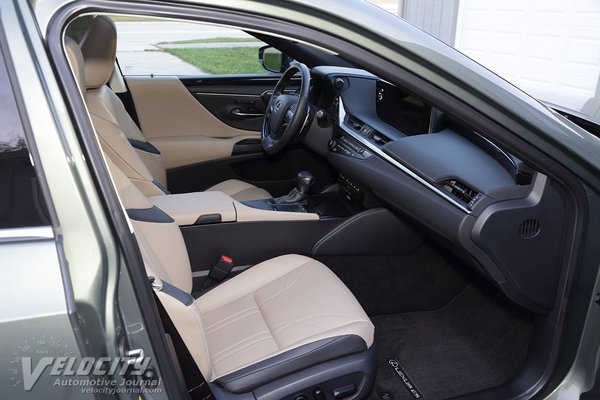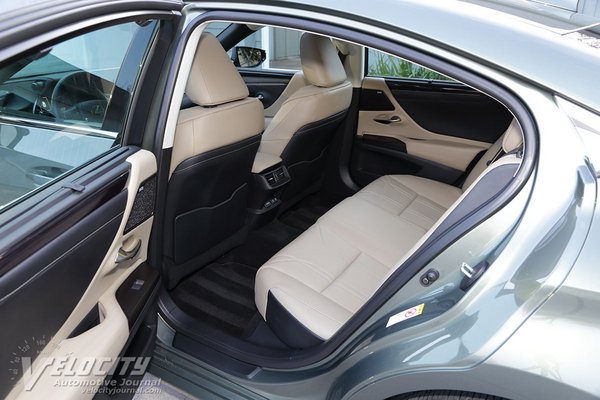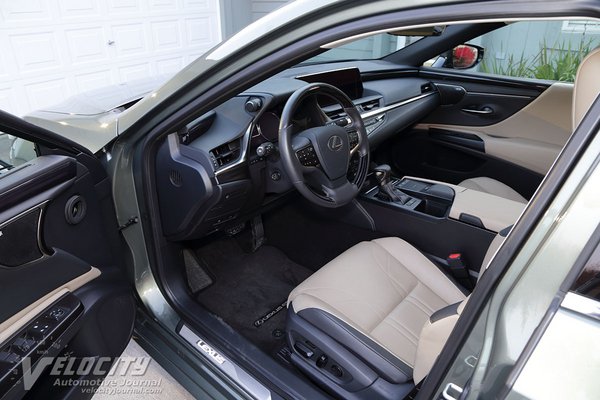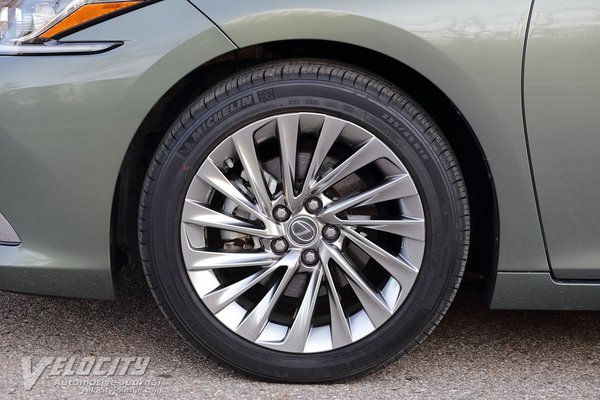2019 Lexus ES350 Ultra Luxury
12/17/2019
Shahed Hussain
The midsize ES is one of the longest running models in the Lexus lineup, going back to the ES 250 dating from the early 1990s. Over the years, the ES has maintained its role as an entry luxury sedan, with the IS as its sport sedan counterpart in the Lexus lineup.
The 2019 ES is offered in two models: the ES 350 and ES 300h hybrid. Pricing starts at $39,600 for the base ES 350 and $41,410 for the ES 300h. Luxury and Ultra Luxury trim levels are available for both models. For 2020 Lexus added the ES 350 F Sport model featuring an adaptive suspension, sport seats, and 19-in. diameter alloy wheels. Standard safety technologies include: pre-collision system (oncoming vehicles, pedestrian and bicyclist detection), dynamic radar cruise control, lane tracing assist, lane departure alert, parking support alert, and 10 airbags.
We tested an ES 350 Ultra Luxury ($43,250), equipped with Navigation & Mark Levinson audio system ($2,900), Blind Spot Monitor, Panoramic View Monitor and other safety technologies ($1,900), 18-inch diameter alloy wheels ($950), heated steering wheel and wiper deicer ($480). Significant standard equipment includes a 12.3 in. infotainment display, power rear sunshade, rear door sunshades, heated and ventilated leather seats, wood interior trim, Siri Eyes Free and Google Voice Control. The estimated total with all options and the $1,025 delivery fee came to $50,505. An identically equipped 2020 ES 350 would be slightly more expensive at $51,005.
Comparisons between the ES and closely related Camry are inevitable, since both are front-drive and share the same V-6 and 8-speed automatic transmission. Significantly, the ES wheelbase is stretched 1.8 in. and is fractionally different in other dimensions. Exterior and interior design, as well as options exclusive to the Lexus are other differentiators between the Camry and ES.
The ES 350 is powered by a normally-aspirated 3.5L V-6 driving the front wheels via an 8-speed automatic. The all-aluminum 2GR-FKS powerplant is topped by dual overhead-cam heads, direct and port fuel-injection (D-4S), plus variable valve-timing (VVT-iW and VVT-I). Rated output is 302-hp @ 6,600 RPM and 267 lb.-ft. @ 4,700 RPM on 87-octane regular fuel. The UA80E 8-speed automatic has seventh and eighth as overdrive gears (0.800:1 and 0.673:1) driving a 2.561:1 axle ratio. Lexus estimates 0-60 MPH in 6.6 seconds and an electronically limited top speed of 131 MPH. Fuel consumption ratings are 22/32 MPG city/hwy. We averaged 28-29 MPG on the highway and around 27 MPG in mixed urban and highway driving.
Like other sedans in its class, the front suspension consists of MacPherson struts and stabilizer bar. At the rear is a trailing wishbone setup with dampers and stabilizer bar. Steering is via an electrically-assisted rack-and-pinion system with 2.6 turns lock-to-lock. Brakes are all-disc with 12.0 in. dia. front rotors and 11.1 in. dia. rear rotors. Optional 18-inch diameter alloy wheels are shod with P235/45R18 Michelin Energy Saver A/S all-season tires. ABS, VSC (Vehicle Stability Control) and SST (Smart Stop Technology) are standard. Curb weight is specified as 3,649 lbs.
Even though the ES shares its platform with the Camry, Lexus spares no effort to imbue the ES with luxury equipment. Materials and build quality are impeccable. Most interior surfaces are padded, reinforcing the impression of luxury. Perforated leather seats provide superb comfort and lateral support, without feeling confining. Both driver and front passenger seats have 10-way power adjustments. Due to the panoramic roof, headroom front and rear is adequate for occupants up to 5'-10" ft. tall. Rear legroom is generous, but headroom is also limited to 5'-10" passengers. Overall seat comfort for outboard passengers is excellent; even the center position comfort is better than average, but still best suited for short trips.
Lexus adopted an LCD gauge cluster consists of a central tachometer surrounding a digital speedometer, flanked by fuel level and coolant temperature gauges to the right. On the opposite side is a multi-function LCD display showing fuel consumption, digital speed readout, exterior temperature and other vehicle data. A rotary knob next to the gauge cluster changes vehicle drive modes between Normal, Sport, and Eco. Switching the drive mode from Normal to Sport changes the tachometer accent color from white to red. Integrated within the wood and leather-wrapped steering wheel are phone, cruise control, vehicle status, and audio system controls.
Unlike other luxury brands, the Lexus 12.3 in. widescreen infotainment display control interface is a console-mounted touchpad. We found the touchpad to be less intuitive and more distracting to use than a typical touchscreen. Knobs and buttons for the optional Mark Levinson system are within easy access of the driver. Climate controls are also intuitively laid out in a row of pushbuttons and rotary knobs for temperature adjustment. Front seat heater settings are conveniently located on the center stack below the audio and climate controls. Besides the standard rearview camera display, additional exterior cameras project a 360-degree overhead view to aid parking maneuvers. Ports consist of one USB port and analog audio input in front; 2 USB ports and a 12V power outlet are accessible for rear seat passengers in the rear console.
The 302-hp V-6 motivates the ES with superb midrange and highway passing acceleration. Coupled with the 8-speed automatic that delivers seamless shifts, this powertrain delivers satisfying performance. Even during full throttle acceleration, the engine never becomes objectionably audible. At 80 MPH, the ES tracks effortlessly on the highway; wind and tire noise are subdued. Switching from Normal to the Sport setting alters transmission shift point to higher RPM and quicker downshifts. An Eco mode is also available, but we only used the Normal and Sport modes. We preferred the Sport mode as it improves acceleration and throttle response. Steering wheel paddles click off fast manual shifts on demand. The lane departure warning and lane keeping assist technologies actively adjust steering to keep the ES in its lane; although useful for inattentive drivers, we preferred them disabled.
The ES steering system filters out most road textures with low steering effort. However, the light steering did not detract from stability at highway speeds. The brakes delivered excellent stopping performance, despite providing minimal pedal feel. Due to its luxury-oriented suspension tuning, the ES showed significant body roll and moderate understeer, but most customers are likely willing to make the trade-off for the supremely comfortable ride that the ES delivers. During our review, we received about 6" of snow in the Detroit area. Driving on unplowed roads, the all-season Michelins provided excellent grip, allowing the front-drive ES to power through the snow and slush with exceptional stability.
Since the first ES nearly 30 years ago, Lexus has gradually refined its formula to deliver an unmistakable luxury sedan experience at a relatively affordable price. Previous customers will not be disappointed in the new ES, as it provides the luxury and amenities they expect. With few direct competitors, the ES remains the benchmark in its class.

